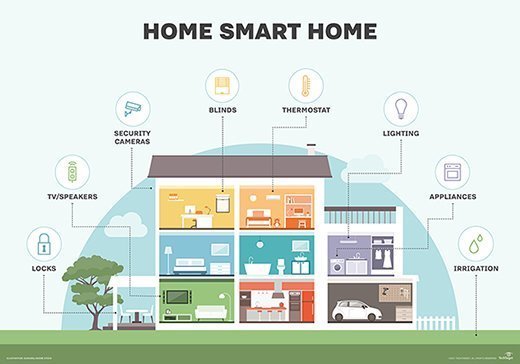20Shift: Your Daily Dose of Insight
Stay updated with the latest trends and news across various domains.
Smart Homes: Where Your Fridge Has More Friends Than You
Discover the amusing world of smart homes, where your fridge's social life outshines yours! Explore tech that transforms daily living.
The Rise of Smart Appliances: How Your Fridge Connects with Your Home
The rise of smart appliances is transforming the way we interact with our homes, particularly through devices like smart refrigerators. These innovative fridges are no longer just storage spaces for food; they now serve as central hubs for managing kitchen tasks and enhancing convenience. Equipped with Wi-Fi connectivity, smart fridges allow users to sync their grocery lists, monitor food inventories, and even receive alerts when items are running low. In doing so, they help individuals streamline meal preparation, reduce food waste, and save time—key factors in today's fast-paced lifestyle.
Moreover, smart refrigerators often feature integrated touchscreens and voice-command capabilities, enabling users to control them effortlessly. Homeowners can easily access recipes, set reminders, and browse the internet directly from their fridge. This not only elevates the cooking experience but also emphasizes the importance of connectivity in modern living. As smart home technology continues to evolve, the connection between your fridge and other home devices will become increasingly seamless, making everyday tasks even more efficient and integrated into our routines.

Smart Homes 101: Are Your Devices Truly Working Together?
In today's world, smart homes have become increasingly popular, with a myriad of devices designed to enhance our daily lives. However, the question arises: are these devices truly working together? A smart home ecosystem ideally allows devices, such as smart thermostats, lights, and security systems, to communicate seamlessly. Features like automated routines can be set to ensure that when one device is activated, others respond accordingly. For instance, you might have a smart smoke detector that triggers the lights to turn on and unlocks the doors in case of emergency.
To ensure that your devices are functioning cohesively, consider the platform compatibility of each device. Many smart home devices operate on different standards like Zigbee, Z-Wave, or Wi-Fi, leading to fragmentation. Therefore, it's essential to choose devices that support the same ecosystem, such as Google Home or Amazon Alexa, to guarantee interoperability. Additionally, using a central hub can further enhance integration. By creating a well-balanced network of devices, you can enjoy a truly SMART home experience where automation simplifies your life rather than complicating it.
Is Your Fridge More Social Than You? Exploring Smart Home Connectivity
As we step into an era dominated by technology, the term smart home connectivity has become a buzzword, influencing how we interact with household appliances. One of the most intriguing examples is the smart fridge, a device that not only keeps our food fresh but also connects to the internet, enabling us to manage our grocery lists, check expiry dates, and even access recipes at our fingertips. This raises an interesting question: is your fridge more social than you? With features that allow it to communicate with other devices and even remind you of upcoming birthdays or scheduled events, the smart fridge embodies the essence of connectivity that many of us overlook in our daily lives.
Moreover, the integration of smart home technology extends beyond just refrigerators. From monitoring energy usage to controlling lighting systems, these devices work together to create a seamless living environment. They can send notifications to your smartphone, let you know when the laundry is done, or suggest the best time to water your plants. As our homes become increasingly interconnected, it’s essential to consider whether we are utilizing these smart technologies to enrich our social lives or if we are allowing them to overshadow our personal connections. After all, while your fridge might be able to share data with your oven, nothing can replace a real conversation with friends and family.